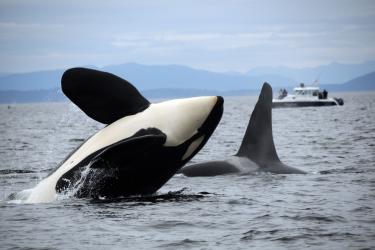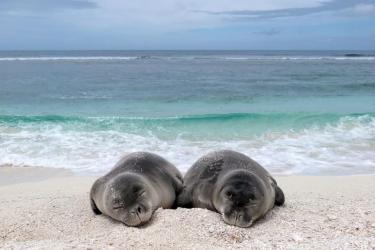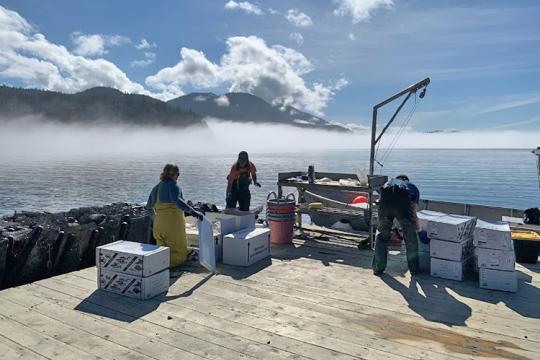Supporting Sustainable Seafood
Based on value, more than 80 percent of marine aquaculture production in the United States consists of bivalve mollusks such as oysters, clams, and mussels. Salmon and shrimp make up most of the rest, but advances in technology, aquaculture feeds, and management techniques are making more species available to the American public.
The most recent 'Fisheries of the United States' reports that marine aquaculture accounts for 7 percent of total domestic seafood production by weight. However, focus on high-value products resulted in aquaculture contributing 24 percent of the value of domestic seafood products.
Sustainable aquaculture practices also serve an important function in supporting commercial and recreational fisheries. For example, aquaculture contributes millions of hatchlings to wild populations. Nearly one quarter of the salmon caught in Alaska and an estimated 70 to 80 percent of those caught in the Pacific Northwest start their lives in hatcheries.
Current Status of Seafood
While the worldwide amount of wild-caught seafood has largely remained the same since the late 1980s, the amount produced through aquaculture has risen dramatically. However, this growth has been largely outside of the United States. Globally, the United States is a relatively minor aquaculture producer. The United States now ranks 18th worldwide, after having once been among the top five worldwide producers. The United States imports 70–85 percent of its seafood; it is estimated that more than half of this imported seafood is produced via foreign aquaculture. Driven by imports, our national seafood trade deficit has grown to $17 billion in 2020.
From 2014–2019, U.S. marine aquaculture production by weight remained about the same. However, the value of sales of domestic marine aquaculture increased an average of 2.3 percent per year in the same time frame.
A compelling case can be made for growing more seafood domestically. Our country is a leading global importer of fish and fishery products, as well as a key provider of technology, feed, equipment, and investment capital to other producers around the world. These qualities help the United States as it expands the sustainable aquaculture industry to meet the public’s growing demand for fresh seafood.






